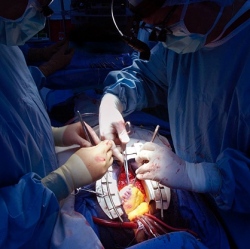
A small sponge-like implant that can mop up cancer cells has been developed by researchers. So far tested in mice, it is hoped the device could act as an early warning system in patients, alerting doctors to cancer spread. The implant seemed to stop rogue cancer cells reaching other areas where new tumours could grow.
Cancer Research UK said nine in 10 cancer deaths were caused by the disease spreading to other areas of the body. About 5mm (0.2in) in diameter and made of a "biomaterial" already approved for use in medical devices, the implant has so far been tested in mice with breast cancer.
Experiments showed that implanting the device in either the abdominal fat or under the skin sucked up cancer cells that had started to circulate in the body. The implant mimicked a process where cells broken loose from a tumour were attracted to other areas in the body by immune cells, the researchers said.
They found that these immune cells set up camp on the implant – a natural reaction to any foreign body – drawing the cancer cells in. Initially, the researchers "labelled" cancer cells so they would light up and be easily spotted.
But they then moved on to a special imaging technique that can distinguish between cancerous and normal cells, and found they could detect cancer cells that had been caught in the implant.
Unexpectedly, when they measured cancer cells that had spread in mice with and without the implant, they found that the device not only captured cancer cells, it reduced the numbers present at other sites.
Researchers have long been looking for ways to detect the spread – or metastasis – of cancer at an early stage, but cancer cells that circulate in the bloodstream are rare and hard to detect.
Study leader Prof Lonnie Shea, from the Department of Biomedical Engineering at the University of Michigan, said they were planning the first clinical trials in humans fairly soon.
"We need to see if metastatic cells will show up in the implant in humans like they did in the mice, and also if it’s a safe procedure and that we can use the same imaging to detect cancer cells," he said.
